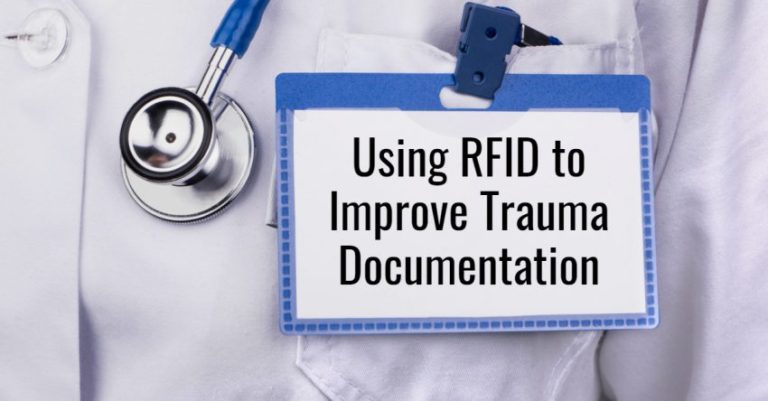The American College of Surgeons (ACS) requires attending physicians to respond to trauma activations in a timely manner. Many trauma centers, however, struggle to document surgeon arrival times accurately using a traditional paper flow sheet.
Recently, trauma program leaders at New York-Presbyterian Queens used radio-frequency identification (RFID) technology to improve documentation and demonstrate compliance with surgeon arrival standards. The team described their new system in a peer-reviewed report published in The Cureus Journal of Medical Science.
ACS requires 15-minute response for most serious traumas
As specified in Resources for Optimal Care of the Injured Patient (CD 2–8), trauma surgeons in Level I and Level II trauma centers must arrive in the ED for full trauma team activations within 15 minutes. The minimum compliance threshold is 80%.
Meeting this standard is a challenge for many trauma programs. According to the New York-Presbyterian Queens (NYPQ) author team, it is easy for a scribing nurse to miss the details of physician arrival during a busy activation.
“The scribing nurse must document several events in the ED simultaneously, despite the confined and chaotic space,” the authors noted.“The scribing nurse may also be required to participate in the patient resuscitation, assisting the primary nurse with tasks such as drawing blood, delivering samples, and establishing intravenous access, taking their responsibility away from recording the patient encounter.”
Due in part to these challenges, NYPQ’s documented surgeon arrival rate was below the 80% compliance threshold. To improve documentation and ensure compliance with the ACS standard, NYPQ implemented a RFID system for recording surgeon arrival times.
How the RFID documentation system works
RFID systems use wireless tags and readers to transmit stored information. At NYPQ, an RFID badge system was already in place for restricting access to medications, supplies and sensitive areas, so deploying the technology for trauma activations required no additional investment.
To deploy the system for the trauma program, an RFID reader was mounted at the entrance of each trauma room. A sign was posted next to each reader to remind staff to “swipe” their badge upon arrival.
Once the readers were installed, trauma team members were required to swipe their badge across the reader when entering a trauma room. Physician swipes data are compiled in a hospital security department database and then sent to trauma program staff. Trauma program staff then use the data to supplement arrival time documentation for the corresponding activations.
Supplementing with swipes data leads to compliance
After implementing the new system, the NYPQ trauma team compared RFID-enhanced documentation with paper-only documentation.
The team examined 531 trauma activations that took place June through December 2016, including 50 full activations.
- Using paper flow sheet documentation alone, physician arrival time was documented in 76% of full activations and compliant with the 15-minute standard in 70% of full activations.
- After documentation was supplemented with RFID badge swipes data, physician arrival time documentation for full activations rose to 90% and compliance rose to 84%.
These improvements in full activation documentation and compliance were not statistically significant. However, the addition of RFID swipes data succeeded in bringing the program’s timely surgeon arrival rate for full activations above the Orange Book’s 80% compliance threshold.
NYPQ also assessed the effect of RFID on documentation of surgeon arrival during limited trauma team activations. The program defines timely arrival for these lower-level traumas as within 60 minutes. Both documentation and compliance for limited activations rose significantly.
Effective tool, possible improvements
According to the Trauma Performance Improvement paper, RFID data can be an effective supplement to trauma documentation.
“The radio-frequency identification (RFID) technology shows promise as a documentation tool given that it does not interfere with physician activities and is relatively simple to integrate into medical settings,” the authors concluded. “We went from below compliance to above compliance with the addition of the RFID system.”
The NYPQ team clarified that RFID does not replace the trauma flow sheet. Rather, it is meant to complement the work of the scribing nurse.
Initially, there was some physician resistance to swiping into the ED. However, the authors noted, usage rates increased over time.
Physician acceptance might be improved by adopting “active” RFID technology. The NYPQ system is a “passive” system that requires physicians to mindfully swipe their badge across the reader upon entry. In contrast, active systems can pick up RFID badge information whenever a wearer enters a room, eliminating the possibility of human error.

